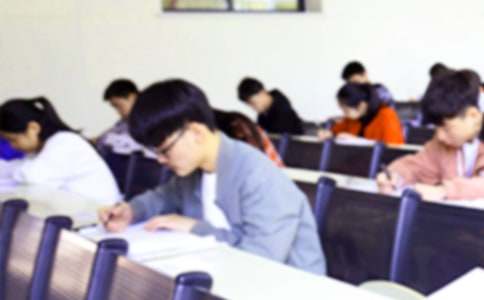- 相關(guān)推薦
2015年職稱英語考試《理工類C級(jí)》教材新增
閱讀理解

第九篇 An Essential Scientific Process
All life on the earth depends upon green plants. Using sunlight, the plants produce their own food. Then animals feed upon the plants. They take in the nutrients the plants have made and stored. But that’s not all. Sunlight also helps a plant produce oxygen. Some of the oxygen is used by the plant, but a plant usually produces more oxygen than it uses. The excess oxygen is necessary for animals and other organisms to live.
The process of changing light into food and oxygen is called photosynthesis. Besides light energy from the sun, plants also use water and carbon dioxide. The water gets to the plant through its roots. The carbon dioxide enters the leaves through tiny openings called stomata. The carbon dioxide travels to chloroplasts, special cells in the bodies of green plants. This is where photosynthesis takes place. Chloroplasts contain the chlorophylls that give plants their green color. The chlorophylls are the molecules that trap light energy. The trapped light energy changes water and carbon dioxide to produce oxygen and a simple sugar called glucose.
Carbon dioxide and oxygen move into and out of the stomata. Water vapor also moves out of the stomata. More than 90 percent of water a plant takes in through its roots escapes through the stomata. During the daytime, the stomata of most plants are open. This allows carbon dioxide to enter the leaves for photosynthesis. As night falls, carbon dioxide is not needed. The stomata of most plants close. Water loss stops.
If photosynthesis ceased, there would be little food or other organic matter on the earth. Most organisms would disappear. The earth’s atmosphere would no longer contain oxygen. Photosynthesis is essential for life on our planet.
詞匯:
nutrient n.營(yíng)養(yǎng)物
organism n.生物體,有機(jī)體
carbon dioxide n.二氧化碳
chloroplast n.葉綠體
molecule n.分子
vapor n.水蒸氣
oxygen n.氧氣
photosynthesis n.光合作用
chlorophyll n.葉綠素
glucose n.葡萄糖
cease v.停止
注釋:
1.Then animals feed upon the plants.動(dòng)物以植物為食。
練習(xí):
1.In the first paragraph,the word “excess” means
A heavy.
B extra.
C green.
D liquid.
2.Which of the following does not move through a plant’s stomata?
A Carbon dioxide.
B Water vapor.
C Oxygen.
D Food.
3.In the title, the term Essential Scientific Process refers to
A photosynthesis.
B the formation of glucose.
C global warming.
D water getting to the roots of plants.
4.This passage is primarily developed by
A explaining a process.
B telling a story.
C comparing and contrasting.
D convincing the reader of plants’ importance.
5.Another good title for this passage would be
A Oxygen and Carbon Dioxide.
B Plants and Their Roots.
C How Photosynthesis Works.
D Why Our Earth Needs Water.
答案與題解:
1.B 前文講到,植物產(chǎn)生的氧氣一部分被植物自身消耗了,但植物消耗的氧氣量遠(yuǎn)小于它們產(chǎn)生的氧氣,因此可以推測(cè)這句話的意思應(yīng)該是剩余的氧氣對(duì)于動(dòng)物以及其他生物體的生存是至關(guān)重要的。excess在句中的意思是“超額的”,與extra“額外的”意思相近。
2.D 從第三段的第一、二句得知,二氧化碳、氧氣和水蒸氣都能從氣孔中通過,唯一一個(gè)沒有提到的是food“養(yǎng)分、食物”,因此該題選D項(xiàng)。
3.A 文章通篇都在講Photosynthesis,即光合作頌鈉作用和重要性,文章結(jié)尾又重申了Photosynthesis is essential for life on our planet,因此選A項(xiàng)。B項(xiàng)是光合作用的一個(gè)部分,C、D項(xiàng)則毫不相干。
4.A 文章先是介紹了進(jìn)行光合作用所需的原料和組織,又介紹了光合作用的過程,因此整個(gè)邏輯應(yīng)該是解釋過程,而不是講故事或比較對(duì)比。D項(xiàng)是“向讀者說明植物的重要性”,這確實(shí)是文章的一個(gè)目的,但不是文章的組織方式。
5.C 文章的主題是光合作用的基本原理,因此選項(xiàng)C。A、B項(xiàng)在文中有提及,但不是主旨,D項(xiàng)與本文無關(guān)。
補(bǔ)全短文
第五篇 A Record-Breaking Rover
NASA’s Mars rover Opportunity has boldly gone where no rover has gone before—at least in terms of distance. ____1____
On July 27, after years of moving about on Martian ground, the golf-cart-sized Opportunity had driven more than 24 miles, beating the previous record holder—a Soviet rover sent to the moon in 1973.
“This is so remarkable considering Opportunity was intended to drive about 1 kilometer and was never designed for distance,” says John Callas, the Mars Exploration Rover Project Manager.
____2____ “But what is really importantly is not how many miles the rover has racked up, but how much exploration and discovery we have accomplished over that distance.”
OPPORTUNITY
The solar-powered Opportunity and its twin rover, Spirit, landed on Mars 10 years ago on a mission expected to last 3 months. ____3____
Spirit stopped communicating with Earth in March 2010, a few months after it got stuck in a sand pit. But Opportunity has continued to collect and analyze Martian soil and rocks.
During its mission, Opportunity has captured, and sent back to Earth, some 187,000 panoramic and microscopic images of Mars with its cameras. ____4____
MARATHON ROVER
The rover doesn’t seem to be ready to stop just yet. If Opportunity can continue on, it will reach another major investigation site when its odometer hits 26.2 miles. ____5____
Researchers believe that clay minerals exposed near Marathon Valley could hold clues to Mars’s ancient environment1. Opportunity’s continuing travels will also help researchers as they plan for an eventual human mission to the Red Planet.
詞匯:
Mars rover n. 火星車
panoramic adj. 全景的
odometer n. 里程計(jì)
rack up v. 積累
microscopic adj. 微觀的
注釋:
1.could hold clues to Mars’s ancient environment:含有與火星早期環(huán)境有關(guān)的線索。
練習(xí):
A It has also provided scientists with data on the planet’s atmosphere, soil, rocks, and terrain.
B He works at NASA’s Jet Propulsion Laboratory in Pasadena, California.
C Scientists call this site Marathon Valley, because when the rover reaches the area, it will have traveled the same distance as the length of a marathon since its arrival on Mars.
D Opportunity has been working on Mars since January 2004.
E The objective of the rovers was to help scientists learn more about the planet and to search for signs of life,such as the possible presence of water.
F Since arriving on the Red Planet in 2004, Opportunity has traveled 25.01 miles, more than any other wheeled vehicle has on another world.
答案與題解:
1.F 前文講“機(jī)遇號(hào)”在距離上比之前的任何漫游車行進(jìn)的距離都長(zhǎng),因此接下來應(yīng)該討論關(guān)于行進(jìn)距離的問題。
2.B 前文引入了一個(gè)新人物John Callas,而后文是他說的一些話,因此這里應(yīng)該填寫的內(nèi)容是對(duì)這個(gè)人的進(jìn)一步介紹。
3.E 前文講了同時(shí)被送入太空的兩臺(tái)漫游車“機(jī)遇號(hào)”和“勇氣號(hào)”,因此下文應(yīng)該對(duì)它們的情況進(jìn)行介紹,而關(guān)于發(fā)射目的的介紹在這里是合適的。
4.A 前文講到“機(jī)遇號(hào)”給地面?zhèn)骰亓嗽S多照片,而選項(xiàng)A中講到它還給地面?zhèn)骰亓嗽S多其他信息,在這里是一致的。
5.C 前文講漫游車在行進(jìn)到26.2英里的時(shí)候會(huì)到達(dá)一個(gè)地點(diǎn),而后文提到了馬拉松谷這個(gè)地方,因此這里應(yīng)該是關(guān)于這個(gè)地點(diǎn)的介紹。
【職稱英語考試《理工類C級(jí)》教材新增】相關(guān)文章:
2015年職稱英語《理工類A級(jí)》新增考試教材06-06
2015年職稱英語《理工類B級(jí)》考試新增教材08-27
2015年職稱英語《衛(wèi)生類C級(jí)》考試教材新增07-03
職稱英語考試?yán)砉ゎ怌級(jí)詞匯強(qiáng)化試題10-26
2015年職稱英語《綜合類C級(jí)》考試教材新增10-15
職稱英語考試?yán)砉ゎ怌級(jí)詞匯選項(xiàng)真題12-05
職稱英語考試?yán)砉ゎ怌級(jí)完形填空真題12-05